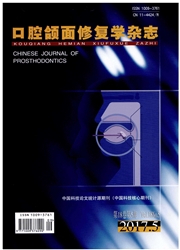

 中文摘要:
中文摘要:
目的:探索各种贮存条件对人富血小板血浆(human platelet-rich plasma,hPRP)生物学活性的影响,研究hPRP释放生长因子的浓度作为评价hPRP生物学活性指标的可行性,为最终确定一整套应用hPRP的标准化方法奠定基础。方法:制备健康志愿者的hPRP,记录血小板计数。将每份hPRP释放生长因子分为3组,分别贮存在4℃,-20℃和-70℃,在制备后0,2,4,6,8,10d测定3组标本中转化生长因子B1(transforming growth factor β1,TGF-β1)和血小板衍生生长因子AB(platelet-derived growth factor AB,PDGF-AB)的浓度。同时,应用不同温度(4℃,-20℃,-70℃)贮存10d的hPRP释放生长因子培养人脂肪基质细胞,以MTT法比较各组标本促进细胞增殖的生物学活性。结果:在体外贮存过程中,hPRP释放生长因子TGF-β1和PDGF-AB的浓度下降很快。低温是保存hPRP释放生长因子相对适宜的环境。当贮存10d后,在-20℃和-70℃贮存的标本其TGF-β1的浓度分别为(238.55±36.00)μg/L和(261.124-55.10)μg/L,PDGF—AB的浓度分别为(46.034-17.67)μg/L和(50.784-18.70)μg/L,显著高于贮存在4oC时两种生长因子的浓度[(113.034-16.29)μg/L和(23.27±8.22)μg/LL(P〈0.01)]。MTT实验结果显示,不同温度贮存hPRP,其生物学活性也有显著差异,且与生长因子浓度差异基本一致。结论:hPRP释放生长因子只能在低温环境中短时间贮存,生长因子定量分析是评价hPRP生物学活性较为可靠的指标。
 英文摘要:
英文摘要:
Objective: This study aims at investigating the biological activity of human platelet-rich plasma (hPRP) stored at different conditions and exploring the method of standardized application of hPRP in vitro. Methods: hPRPs of healthy donors were prepared by Curasan PRP kits and the platelet counts were tested. Each hPRP was activated by thrombin activator and hPRP-released growth factors (GFs) were collected and the levels of TGF-β1 and PDGF-AB were measured using ELISA assay. Each sample was divided into 3 groups and stored at 4 ℃, - 20 ℃ and - 70 ℃ respectively. After 2, 4, 6, 8, 10 days, the levels of GFs in each sample were measured using ELISA assay. Moreover, hPRP samples stored at different temperatures were supplemented into culture media of human adipose tissue-derived stromal cells (hADSCs) and MTT assays were applied to examine their biological activities. Re- suits: The level of hPRP-released TGF-β1 and PDGF-AB descended rapidly when stored in vitro and lower temperature was preferable condition for their storage. When stored for 10 days, the levels of TGF-β1 and PDGF-AB stored at -20 ℃ and -70 ℃ were significantly higher than that stored at 4 ℃. In MTT assay, the similar results were obtained. Conclusion: The hPRP-released GFs should be stored at low temperature condition to preserve the biological activity. Quantitative analysis of GFs can be used as a credible standard to evaluate the biological activity of hPRP.
 同期刊论文项目
同期刊论文项目
 同项目期刊论文
同项目期刊论文
 期刊信息
期刊信息
